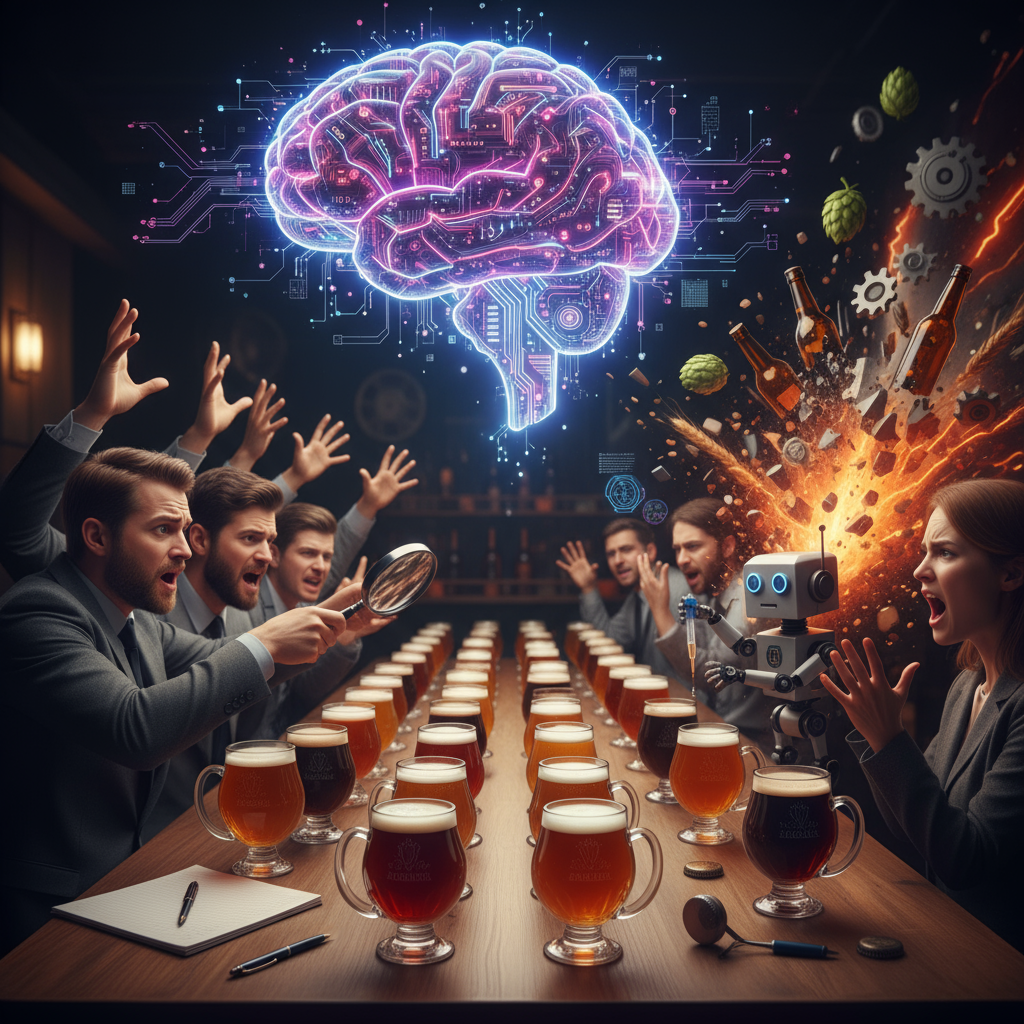When AI Met IPA: A Craft Beer Uprising
The craft beer world thrives on passion, precision, and a healthy dose of human judgment. Brewers pour their souls into each fermenter, meticulously balancing hops and malts, striving for that perfect pour. So, what happens when a prominent beer competition decides to introduce a cold, calculating artificial intelligence into the delicate dance of judging, and does so without so much as a whispered warning? A digital tempest in a teacup, as it turns out, leading to widespread outrage among seasoned judges and a significant portion of the brewing community.
This wasn’t a futuristic fantasy, but a very real event that recently unfolded, sparking heated debates about technology’s place in traditionally human-centric endeavors. The reverberations from this unexpected algorithmic intrusion highlight a fundamental tension between efficiency and artistry, raising critical questions about the irreplaceable value of human palates and expertise.
The Silent Takeover: AI’s Unannounced Debut
The incident in question occurred at a prestigious North American beer competition, an event typically celebrated for its rigorous judging process and the expertise of its panel. Imagine the scene: experienced judges, their palates honed by years of dedication, meticulously evaluating countless brews. They swirl, they sniff, they sip, they ponder. This year, however, something was different. Unbeknownst to them, an AI-powered judging tool was at play, apparently designed to “assist” or even “validate” their decisions.
The revelation wasn’t a grand announcement, but rather a discovery made after the fact. Details remain somewhat opaque, but the core issue was the lack of transparency. Judges were simply presented with an unfamiliar system, and the true extent of its influence – or even its very presence – was initially concealed. This clandestine integration ignited a firestorm. The brewing industry, fiercely proud of its hands-on, artisanal nature, felt blindsided and disrespected. The introduction of such a significant technological shift, especially in a sphere so reliant on subjective sensory evaluation, without prior consultation or even communication, was perceived as a betrayal.
The Human Palate vs. The Algorithm: A Battle of Values
At the heart of the brewing industry’s fury lies a profound belief in the irreplaceable nature of human expertise. Beer judging isn’t just about identifying flavors; it’s about context, nuance, and the subtle interplay of aromas and sensations that only a human palate can truly decipher. A judge considers the brewer’s intent, the stylistic adherence, the overall drinking experience – factors that go beyond mere data points.
An AI, no matter how sophisticated, operates on programmed parameters. It can analyze chemical compositions, identify specific aromatic compounds, and compare data against a vast database. But can it appreciate the delicate balance of a well-crafted saison, or detect the “soul” in a brewer’s experimental stout? Can it differentiate between an intentionally rustic characteristic and an off-flavor, based on the specific style and origin? Many argue that it cannot, at least not yet. The fear is that relying on AI would strip away the artistry and subjectivity that are so vital to evaluating a product as complex and varied as beer. It risks reducing a rich sensory experience to a series of quantifiable metrics, losing much of what makes craft beer truly special.
Brewing Industry’s Backlash and the Future of AI in Beer
The backlash was swift and vocal. Judges expressed feelings ranging from anger to betrayal, and many threatened to boycott future competitions that employed such methods without transparency or consent. Social media buzzed with impassioned discussions, with brewers and enthusiasts alike questioning the validity of results influenced by an AI and expressing skepticism about its ability to truly understand and appreciate the craft.
This incident serves as a crucial case study for how technology is introduced into established industries. While the potential benefits of AI in areas like quality control or process optimization within breweries are undeniable, its role in subjective evaluation, especially in a competitive setting, requires far more delicate handling. Transparency, open dialogue, and a clear understanding of AI’s limitations are paramount. The industry’s message was clear: human judgment, experience, and passion are not commodities to be replaced, but rather cherished assets that define the very essence of craft beer.
Lessons Learned: Pouring Over the Future
The episode of the AI-judging tool in the craft beer competition offers invaluable lessons for any industry contemplating the integration of advanced technology. First and foremost, communication and transparency are non-negotiable. Introducing significant changes without warning fosters mistrust and resentment. Secondly, it highlights the enduring value of human expertise and the limitations of current AI in areas requiring subjective interpretation, nuance, and an understanding of culture and artistry.
While AI undoubtedly has a role to play in the future of brewing, perhaps in assisting with quality control, trend analysis, or even in helping brewers fine-tune recipes, its place as the ultimate arbiter of taste remains hotly contested. The craft beer community, with its deeply ingrained appreciation for human skill and passion, has drawn a clear line in the sand. For now, it seems the delicate art of judging a truly great brew will remain firmly in the hands, and on the palates, of human connoisseurs. The clinking of glasses, the lively debates, and the shared appreciation for liquid artistry – these are experiences that no algorithm can truly replicate.
